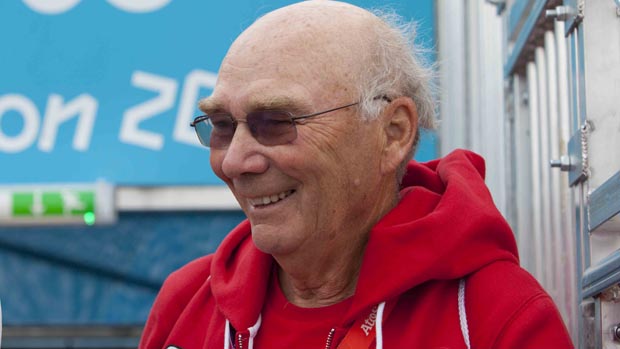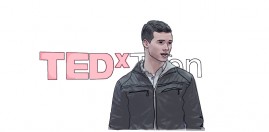Spanish Motivation Tips From A… Rowing Coach?

Get our free email course, Shortcut to Conversational.
Have conversations faster, understand people when they speak fast, and other tested tips to learn faster.
More info“The best form of motivation is progress.” – Mike Spracklen
Unless you’re a rower, you probably have no idea who Mike Spracklen is.
For about two and a half years, the sport of rowing consumed my life. To this day, a few years after leaving the sport (though I’ll definitely be back), I’m a walking encyclopedia of rowing technique. I consumed everything I could get my hands on – including watching nearly every Olympic and World Championships final from the last thirty years, some over and over.
At one point, I bought a video about the Canadian National Rowing Team, called “Thoughts About Rowing”. The head coach and main subject of the film? Mike Spracklen.
One of the things he said has stuck with me, years after I watched the film, was the quote above.
“The best form of motivation is progress.”
He’s not alone in that sentiment. Tony Robbins says that “progress equals happiness”.
It’s the same with learning Spanish. The most exciting thing, the part that really drives motivation, is seeing progress. Feeling the progress.
Suddenly it doesn’t matter that you aren’t instantly fluent. If you are better today than you were a week ago, that’s progress. That fuels the next week of effort.
If you see that what you are doing moves you towards your goal (whether that’s learning Spanish or something else), that generates motivation to continue doing it.
This truth is actually one of the main reasons why the initial principle I talked about in the massive guide, communication before perfection, is so important. When you focus on communication, you see more progress faster, which means that you build up the motivation to continue.
Progress = Motivation
If we assume that progress = motivation, then this cleans up our thinking about how to stay motivated. As you’ll see, this concept is our guiding principle.
In fact, because everything in the guide, from the stages of learning to the principles and strategies, is designed for learning Spanish as fast as possible, it’s also optimized for motivation.
There will be a few different concepts we talk about here, and they all link back to progress in some way.
Accountability and Stakes
Let’s first discuss one of the most powerful ways to keep motivated with any goal: accountability and stakes.
This can take a few different forms, but the one I used in the documentary and what I recommend is fairly simple.
- Establish a process-based goal for each day or week. E.g., one hour of classes on Skype and 15 minutes of flashcards, six days a week (or whatever you decide). It’s very important that this is not an outcome (reaching a certain level in Spanish), which you can’t control, but rather an input (doing a specific thing or doing something for a certain amount of time), which you do control.
- Establish stakes. If you fail to follow #1, what happens? E.g. you could donate $100 to a charity or political party you hate. If monetary, make it enough to sting, but enough that you could afford to lose it. It doesn’t have to be monetary though. It could be as simple as being forced to do a task you really hate – like a grueling workout.
- Get on Facebook or wherever all of your friends are, and tell them about the above. Tell them what you are setting out to do, why, what you are going to do each day or week to get there, and what happens if you fail.
- Pick someone who cares about seeing you succeed, like a close friend or family, and then have them keep you accountable. They have to check in with you and make sure you’ve done your stuff. If you haven’t, they enforce the stakes.
There are two tools that make the process of the stakes easy, both of which are based on money:
If you really want to turbocharge this, make a spreadsheet on Google Sheets that tracks your progress. Just list the day along the top, then each task you are supposed to complete each day, then mark each day whether you did it or not.
Now, make this sheet public, and share the link in your Facebook post. Now, everyone can see if you are doing your work or not, not just your accountability partner. This, on it’s own, makes a difference.
I did this, putting the link out to Facebook, Twitter, my email list, and on the website about the documentary that was up during the challenge.
To make it even more powerful, incentivize people to check it. Offer the first person to catch you not do your stuff or fill it in on time, for each day, $50.
Now some people don’t need to go this hardcore. But for most, a little social pressure is extremely powerful.
Why This Works
There are two main things at work here:
- Pain Avoidance. You don’t want to have to tell your friends that you failed. You don’t want to donate $100 you can’t afford to an anti-charity.
- Positive Reinforcement. When the time you spend actually yield you progress (that’s the point of the guide and these emails), then when the pain avoidance kicks in and makes you do what you said you would, you make progress.
Basically, accountability and stakes are a mechanism to help make sure you do the things that you should, so that you make progress. That progress is what fuels the internal motivation and actually keeps you going in the long run.
An even simpler form (though slightly less powerful, depending on how much money is involved and your price sensitivity) is to just pay for something. Pay for a teacher or a program. Mentally, you are now committed to it. “I spent money on that, so I should get the value I paid for” is what is going on in your head subconsciously – and of course, that means you’ll use the teacher you paid for, which yields progress.
If you want to make the fastest progress possible, you need to not only learn the grammar and vocab of Spanish, but you need to actually practice using it in real conversations (that’s the power of immersion). The best way to do that is with BaseLang, where you get unlimited one-on-one tutoring with professional teachers for just $179/mo. Your first week is just $1 so you can try it out. Click here to try it out.

